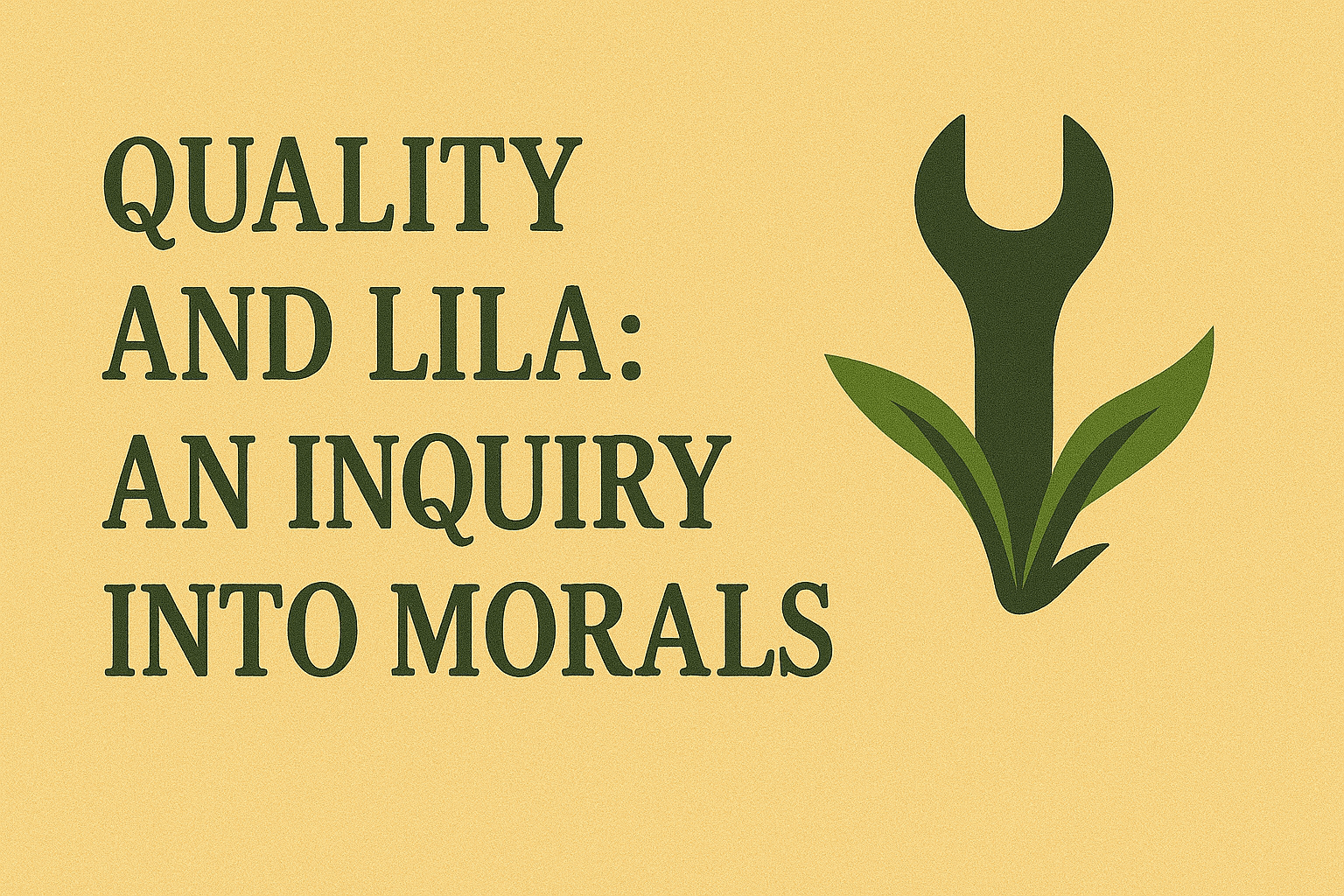A detailed look at how Pirsig uses trip with Lila as a metaphor for understanding and appreciating quality in life, and how it builds and blends technical precision with aesthetic appreciation over Zen and the Art of Motorcycle Maintenance.
Robert M. Pirsig’s Lila: An Inquiry into Morals is a profound continuation of the philosophical journey he began in Zen and the Art of Motorcycle Maintenance. In Lila, Pirsig deepens his exploration of the Metaphysics of Quality (MOQ), using a trip on a boat with a woman named Lila as a metaphorical framework. This article delves into how Pirsig uses this journey to further understand and appreciate quality in life, expanding upon the themes of technical precision and aesthetic appreciation introduced in Zen and the Art of Motorcycle Maintenance.
The Journey with Lila
In Lila, Pirsig embarks on a boat trip along the Hudson River, accompanied by Lila, a woman he meets along the way. This journey serves as both a literal and metaphorical exploration of quality and morality.
- The Physical Journey: The boat trip is the backdrop against which the philosophical inquiry unfolds. The confined and intimate setting of the boat creates a space for deep reflection and interaction between Pirsig and Lila, mirroring the introspective journey the reader is invited to undertake.
- The Metaphorical Journey: Lila herself becomes a central figure in Pirsig’s inquiry into morals and quality. Her complex personality and unpredictable behavior challenge Pirsig’s understanding of quality, pushing him to refine his philosophical framework. The journey with Lila represents the dynamic interplay between order and chaos, stability and change, which are key aspects of the Metaphysics of Quality.
Understanding Quality Through the Metaphysics of Quality
Pirsig’s Metaphysics of Quality offers a comprehensive framework for understanding reality, where quality is the fundamental principle. In Lila, Pirsig expands on the concepts of static and dynamic quality introduced in Zen and the Art of Motorcycle Maintenance.
- Static Quality: Static quality refers to the stable, structured aspects of life. These are the values, traditions, and norms that provide continuity and order. In Lila, Pirsig explores how static quality manifests in societal structures and individual behaviors, offering a foundation upon which dynamic quality can build.
- Dynamic Quality: Dynamic quality represents change, innovation, and the creative force that drives progress. Lila’s unpredictable nature embodies dynamic quality, challenging static norms and pushing boundaries. Pirsig’s interactions with Lila highlight the necessity of embracing dynamic quality to foster growth and adaptation.
- Integration of Static and Dynamic Quality: The journey in Lila demonstrates the importance of balancing static and dynamic quality. Just as in Zen and the Art of Motorcycle Maintenance, where technical precision and aesthetic appreciation are integrated, Lila shows how stability and change must coexist. This balance is crucial for achieving a holistic understanding of quality in life.
Technical Precision and Aesthetic Appreciation
In Zen and the Art of Motorcycle Maintenance, Pirsig emphasized the importance of integrating technical precision with aesthetic appreciation. This theme is further developed in Lila, where the focus shifts to a more nuanced understanding of quality in human relationships and societal norms.
- Technical Precision: Pirsig’s meticulous approach to maintaining the boat reflects the theme of technical precision. Just as motorcycle maintenance required careful attention to detail, navigating the complexities of life and relationships demands a similar precision. This technical aspect ensures that systems and interactions function smoothly and effectively.
- Aesthetic Appreciation: Lila’s character brings a sense of aesthetic appreciation to the narrative. Her spontaneity and emotional depth contrast with Pirsig’s analytical mindset, highlighting the need for emotional and aesthetic engagement in understanding quality. This appreciation goes beyond mere functionality, encompassing the beauty and richness of human experience.
- Blending Precision and Appreciation: The integration of technical precision and aesthetic appreciation is central to Pirsig’s philosophy. In Lila, this blend is portrayed through the evolving relationship between Pirsig and Lila. Their interactions reflect the dynamic interplay of logic and emotion, structure and spontaneity, ultimately enriching their understanding of quality.
The Evolution of Pirsig’s Thought
Lila represents an evolution in Pirsig’s philosophical journey. While Zen and the Art of Motorcycle Maintenance laid the groundwork for the Metaphysics of Quality, Lila delves deeper into its moral implications.
- Expansion of the MOQ: Pirsig expands the Metaphysics of Quality to include a detailed exploration of moral values. He categorizes values into four levels: inorganic, biological, social, and intellectual. This hierarchical structure helps to explain the complexity of moral decisions and the interplay between different types of quality.
- Moral Inquiry: The book’s subtitle, An Inquiry into Morals, highlights its focus on moral philosophy. Pirsig uses his journey with Lila to explore how quality can serve as a basis for moral judgments. He argues that actions aligned with dynamic quality are morally superior because they promote growth and innovation.
- Philosophical Integration: Pirsig’s work in Lila integrates Eastern and Western philosophical traditions, offering a holistic view of quality and morality. This integration provides a comprehensive framework for understanding human behavior and societal norms, emphasizing the importance of both stability and change.
Conclusion
Robert M. Pirsig’s Lila: An Inquiry into Morals builds on the themes introduced in Zen and the Art of Motorcycle Maintenance, using the journey with Lila as a metaphor for understanding and appreciating quality in life. Through this narrative, Pirsig explores the balance between static and dynamic quality, the integration of technical precision with aesthetic appreciation, and the moral implications of the Metaphysics of Quality. Lila represents an evolution in Pirsig’s thought, offering deeper insights into the nature of quality and its role in shaping our lives and relationships. By blending philosophical inquiry with personal narrative, Pirsig provides a rich and nuanced exploration of quality, inspiring readers to seek a more holistic and meaningful understanding of their own lives.
